Seeing Like an Artist, Critical Making and Staying One Step Ahead of the Robots: The Launch of the Creative School
By Ryan Millbern
When Marcus Hayes sees an open space, he analyzes it for its potential as a place to dance. “In my mind, I want to perform this ballet across-the-floor combination,” Hayes said. “I have so many friends who hate going shopping with me because I can’t stay still.”
When he thinks about his daily routine – brushing his teeth, making coffee, tying his shoes – every seemingly mundane movement becomes fodder for a possible creative act, an expression, a production. “It’s literally the way I see the world. It’s always with me, even if I’m not physically in the dance studio.”
It’s a way of seeing the world that Hayes, dean of DePauw University’s newly launched Creative School who has devoted his academic life to the study of dance, hopes to instill in all DePauw students. “I want students to find that way of having creativity be an important part of their lives,” Hayes said. “How does it allow them to see the world? I want all students to have that appreciation for beauty.”
By taking courses in a variety of disciplines in the Creative School, DePauw students develop an appreciation for beauty by examining what makes a work of art beautiful, what constitutes innovation in creative expression and how artistic taste is refined over time. But beyond acknowledging artistry across various mediums, Hayes hopes students see the myriad opportunities for creative input – and possible career paths – embedded in everything around them.
“Take the iPhone,” Hayes offered. “It’s a perfect marriage of science and business, but also design. It feels good in your hand; someone had to think about that, and the way the screen functions and how the pixels render. If you listen to popular media, you’d think we should get rid of the arts. But then who will design the next car? The next clothing brand? The next iPhone? People think you have to do something ‘practical’ that leads to great success. Why can’t you have great success as an artist?”
A curriculum for the critical makers
To Hayes and Vice President for Academic Affairs Dave Berque, the launch of the Creative School builds on the interdisciplinary creative collaboration that has always happened on DePauw’s campus. It’s also a recognition of today’s generation of creatives, many of whom are multihyphenates – the writer-videographer-painter, the app developer-musician, the entrepreneur-graphic designer-actor. These students came of age in the era of the content creator, and for many of them, their outlets for creative expression live at the intersection of art, technology and business, where rigid labels and the parameters of traditional academic subjects are less important than the actual making.
“I like that the Creative School is an organizational category that doesn’t seem like it’s interfering with important disciplinary boundaries,” said Harry Burgan, a 2024 graduate English major and writer. “It’s creating a space to provide collaboration between them.”
Burgan has done a lot of thinking on the topic. His senior thesis, “Modernism(s), the Arts, and the Dance of the Critical I,” addresses a wide range of questions at the heart of educating artists and art’s role in society, including: “Is there a critical making that is different from critical thinking?”
Burgan reflected on what happens when his girlfriend, Kaylynn Gropp ’23, a painter, studies a painting versus what happens when he views the same work of art. “I can read lots of art history, and I can approach it from all my different ways of knowing, but Kaylynn’s going to have a more direct, tactile imagination of what it would be like to paint in a way that I never could,” Burgan said. “With art you learn a form, but your learning of the form is deeply personal. Kaylynn’s embodied memory of painting would be different from mine, and thus, her appreciation for the work is deeper.”
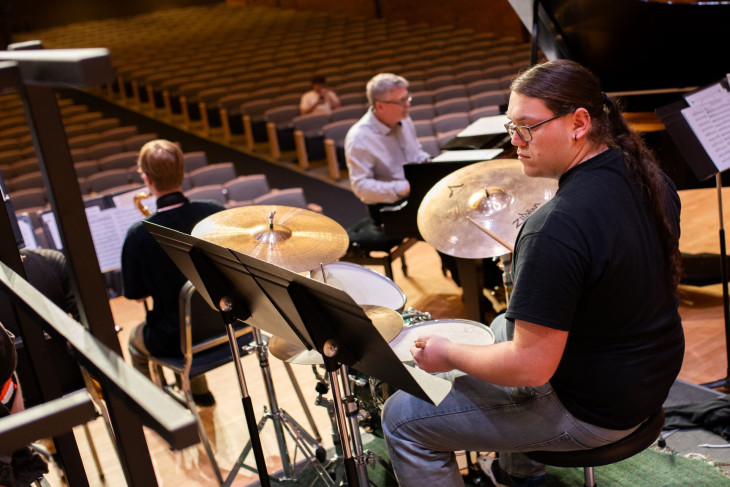
The Creative School will afford students from all majors opportunities to engage in critical making, to experience an appreciation for different art forms and ways of expression that can only come from actively composing. “When I was in college, most of my peers consumed media; we didn’t produce it,” said Berque. “Our students now really want to create things.”
In composition classes like Music and the Related Arts, students in the Creative School will make music, scripts, paintings and stories. In the process, they will internalize an understanding of the composition process, study how it applies across a variety of creative pursuits and develop the embodied memory of the form to which Burgan refers.
Dean Hayes believes this experience will provide students with a nuanced understanding of the creative process, which will enhance their education – and improve their post-graduate prospects – regardless of their academic major. “Let’s say you’re a businessperson leading in a creative field,” Hayes said. “I want you to be able to speak to designers and understand how they see the world – and I need designers to understand the language of business and entrepreneurs. It’s also true for the sciences and the humanities. We have to learn how to speak to one another so we can get to the good stuff.”
Collaboration, creativity and the liberal arts approach
Faculty in some areas are working to develop curricula for Creative School disciplines that increase collaboration between and across disciplines while maximizing opportunities for collaboration on projects. Caroline Jetton, director of DePauw’s Institute of Music, collaborated with other faculty to revamp their curriculum to allow more flexibility for music students and more opportunities for non-music majors to benefit from music courses. “We wanted pursuing music to feel more manageable for students in our program, so we had to ask, ‘What is essential?’” Jetton said. “We were thoughtful and intentional and are proud of what we’ve created.”
Jetton noted that there has been a mourning period for many faculty members as the School of Music became the Institute of Music, but that the curricular flexibility in the new Creative School model will enable expansion for everyone involved. “Our faculty will have opportunities to create topics courses based on their passions and to look for opportunities to collaborate,” Jetton noted. “For instance, could a theater and a music course have some kind of overlap? If so, what would that look like? There’s synergy when you have multiple perspectives involved that creates something bigger than the sum of its parts. Everyone feeds off that.”
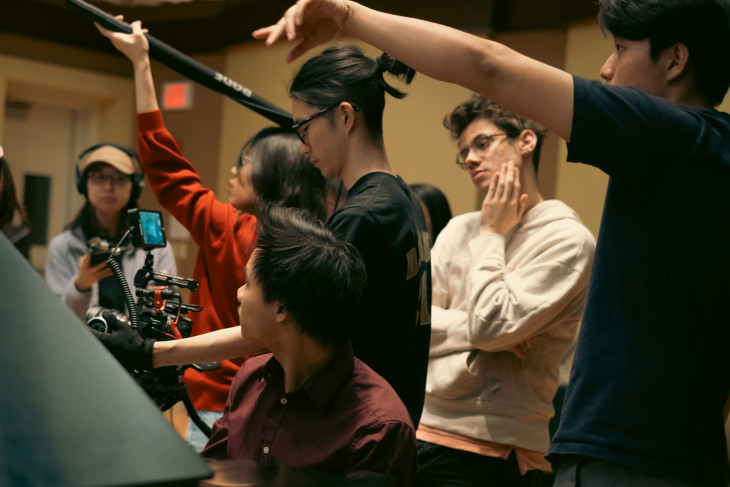
Maggie Perry ’24, an art history major with minors in Hispanic studies and museum studies, is a testament to the power of the creative collaboration happening on campus. Perry worked as an art reviewer for A Midwestern Review and served on the board of DePauw’s annual Art Walk. While at DePauw, she participated in four internships, including serving as the Arts of Africa curatorial intern at the Brooklyn Museum as part of the New York Arts Program. There she worked extensively on two exhibitions, “Sakimatwemtwe: A Century of Reflection on the Arts of Africa” and “Africa Fashion,” conducting research, designing exhibitions and working on the exhibition catalogs.
Her diverse experiences led to her Honors Scholar thesis, which focused on accessible art engagement practices. Her thesis drew on art history, museum studies, education studies and anthropology and included research and practical applications on disability justice, barriers to participation and universal design.
“Creativity brings together people from across campus, from all disciplines, from all majors,” Perry said. “This is my passion for inclusive accessibility. How can we get as many people into the conversation to be creative together? That’s where the most innovation happens.”
Giving and receiving constructive criticism: the ultimate soft skill
Interdisciplinary collaboration on creative projects requires students to continually provide and receive criticism. To iterate and compromise. To reevaluate and refine their approach. Along with aesthetics and composition, critique is a third component of the Creative School curriculum that Hayes believes will benefit students from all majors.
“Artists give and receive feedback every day in ways that people in other disciplines rarely do,” Hayes said. “When you’re in the process of making and you’re receiving a lot of feedback, you have to develop a thick skin. We keep talking about soft skills. When we’re intentional about the learning outcomes of studying in the creative arts, we get a different result.”
Business students in a creative writing workshop will learn to give constructive criticism to classmates that will enable them to be more empathetic managers. Scientists in a painting course will understand that sometimes the best way to break through a challenging phase of a project is to experiment with different approaches. An artist exposed to the scientific method may find that a more systematic approach to solving a creative problem will bear fruit.
“In our three-school model, a strong College of Liberal Arts and Sciences is central,” Berque said. “We are doubling down on the liberal arts by bringing some of those methodologies – problem-solving, critical thinking, cultural awareness, ability to communicate ideas, teamwork – into the School of Business and Leadership and the Creative School to become a national model for how that can be done.”
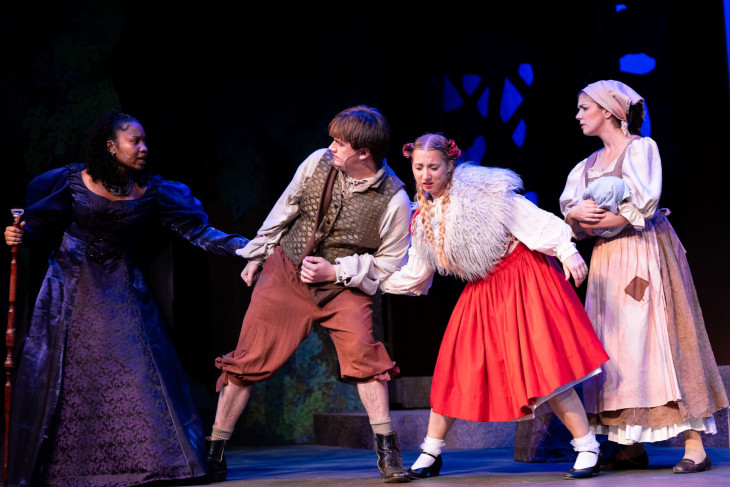
In the end, human creativity wins
Permeating the Creative School will be a focus on technology: providing students with the latest video-editing and graphic design software, affording them access to state-of-the-art recording studios, VR simulators and maker spaces. For Hayes, the focus on technology is less about stockpiling the latest and greatest gadgets to appeal to prospective students, and more about giving DePauw students what they need to produce their most relevant and original work.
“Adobe is releasing a version of their Creative Suite to every high school in America,” Hayes said. “If every high school student is graduating with a basic understanding of that software, how do we push the skills and knowledge that they may already walk in the door with?”
The Creative School’s focus on technology also addresses the proverbial elephant in the room of any current discussion of creativity: AI and its implications for the ways in which human beings create. “I don’t think AI will ever be able to make art better than a human being [can],” Hayes noted. “We have to think about how we use it as a tool that makes what we make better. I want our graduates to be tastemakers, the people at the forefront who are determining what we’re making and how we’re making it.”
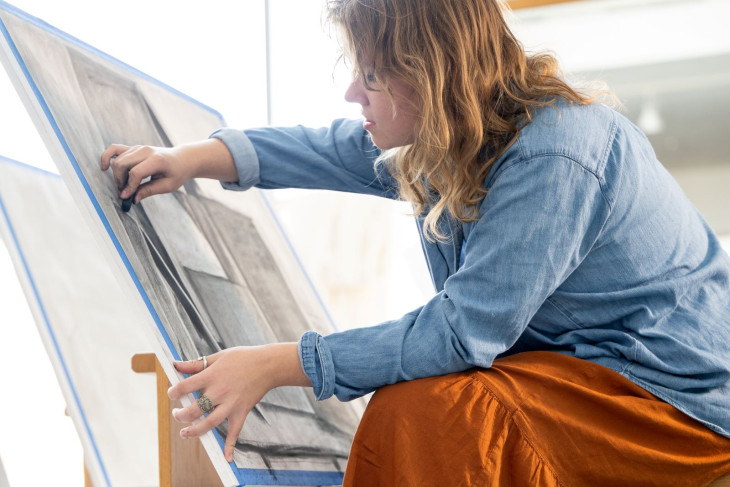
Innovators aren’t interested in replicating what has been done before. When the models of the past no longer apply, they stand ready to shed convention, cut across the grain and forge their own paths. Even in times of great change, when the stakes are the highest, they are prepared to take calculated risks. In fact, they must be.
“Our mission includes calls for us to produce the leaders the world needs,” Berque said. “It’s not accidental that ‘the world needs’ is part of that statement. We are trying to think about not just a philosophical education but also one that’s going to help students do good in the world after they graduate. Part of a good global experience is a creative and artistic experience. Creativity is one of the things that makes humans human. Producing graduates who are creative is something we have always done and done particularly well. These graduates are also what the world needs.”
DePauw Magazine
Fall 2024
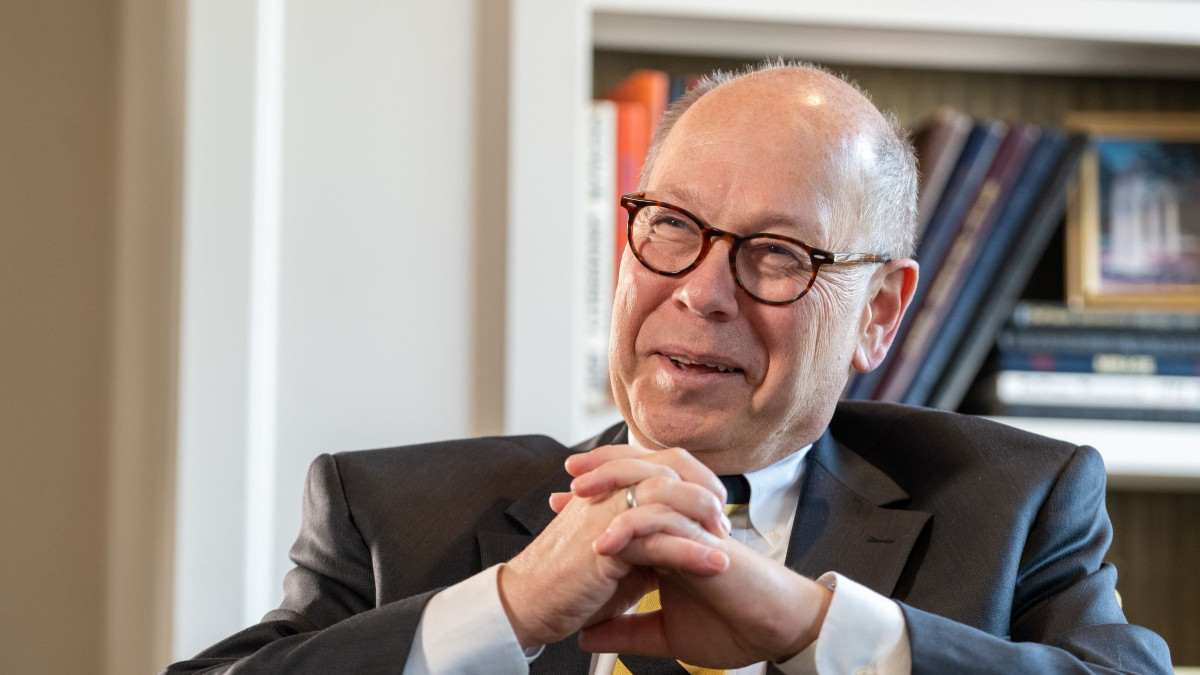 Andy Rieth ’80
Andy Rieth ’80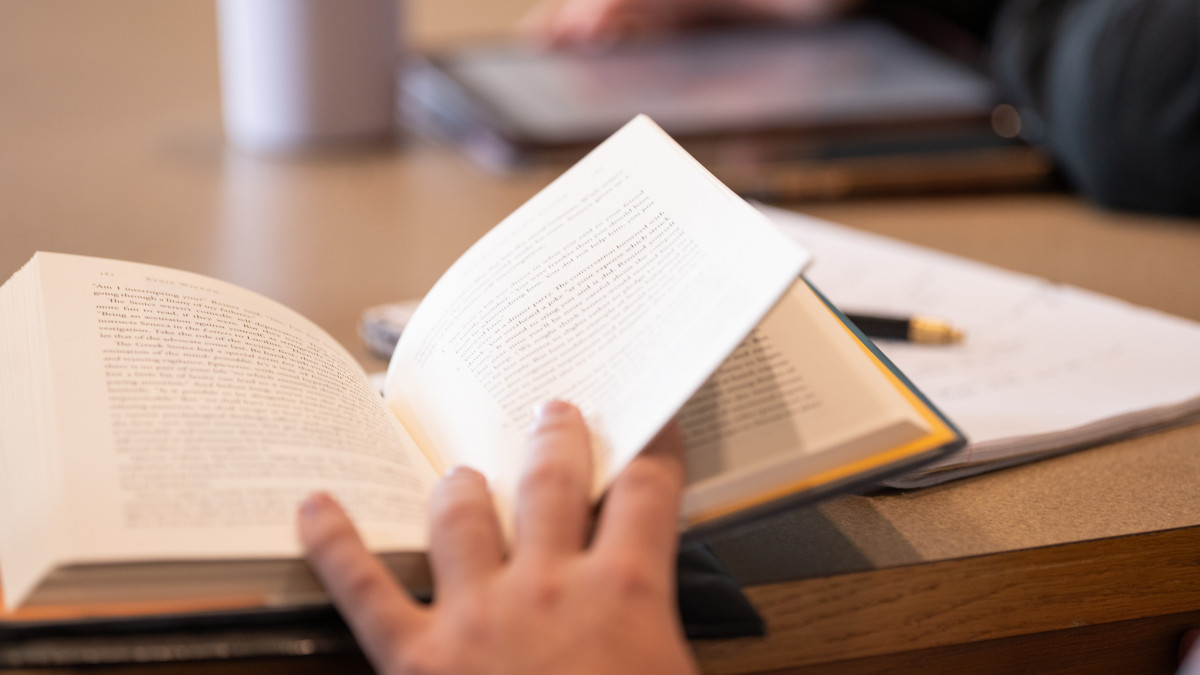 Freedom of Expression and Academic Freedom
Freedom of Expression and Academic Freedom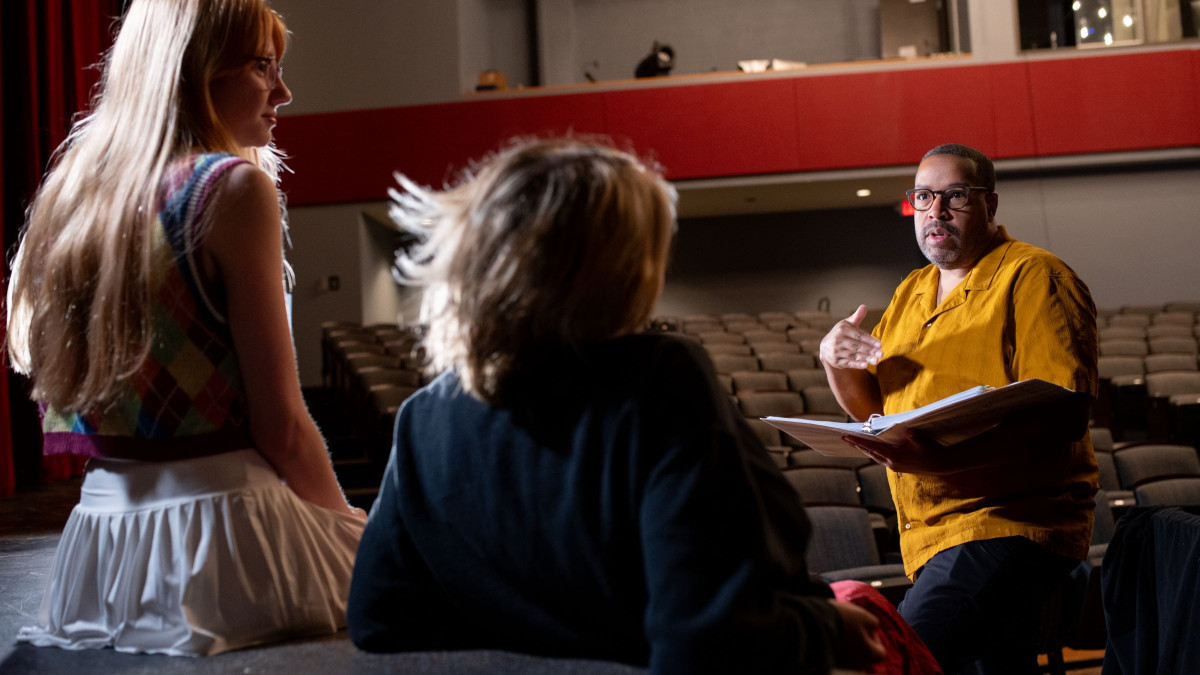 The Launch of the Creative School
The Launch of the Creative School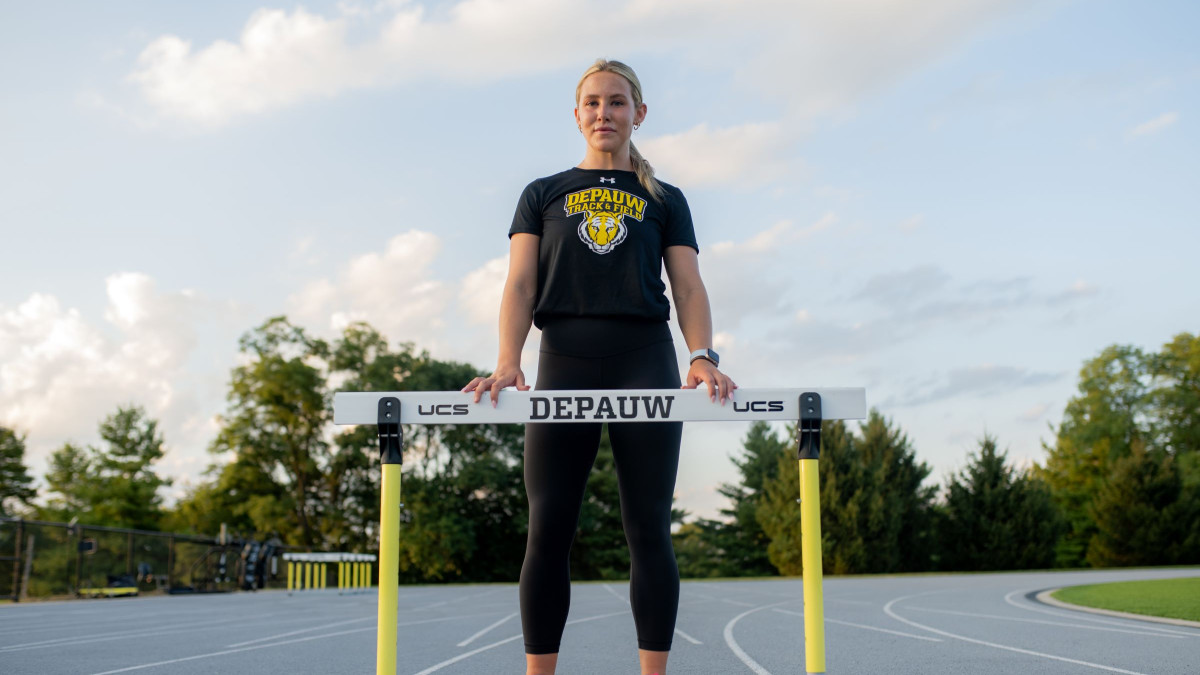 Full Speed Ahead
Full Speed Ahead
DePauw Stories
A GATHERING PLACE FOR STORYTELLING ABOUT DEPAUW UNIVERSITY
Browse other stories
-
Athletics
-
Softball - DePauw Sweeps Hiram to Clinch Share of NCAC Title
-
Men's Track & Field - DePauw Takes Second at Wilmington Invite
-
Men's Track & Field - Jansen Wins Decathlon, Risley Takes Sixth at NCAC Combined Event Championships
More Athletics
-
-
News
-
Little 5 makes big splash through philanthropy and service
-
Greencastle Celebrates National Main Street Day with Small Business Breakfast, New Program Launch, and Spring Pitch Competition
-
Hirotsugu "Chuck" Iikubo ’57 remembered as thoughtful leader, advocate for international goodwill
More News
-
-
People & Profiles
-
11 alums make list of influential Hoosiers
-
DePauw welcomes Dr. Manal Shalaby as Fulbright Scholar-in-Residence
-
DePauw Names New Vice President for Communications and Strategy and Chief of Staff
More People & Profiles
-
-
Have a story idea?
Whether we are writing about the intellectual challenge of our classrooms, a campus life that builds leadership, incredible faculty achievements or the seemingly endless stories of alumni success, we think DePauw has some fun stories to tell.
-
Communications & Marketing
101 E. Seminary St.
Greencastle, IN, 46135-0037
communicate@depauw.eduNews and Media
-
News media: For help with a story, contact:
Bob Weaver, Senior Director of Communications.
bobweaver@depauw.edu.